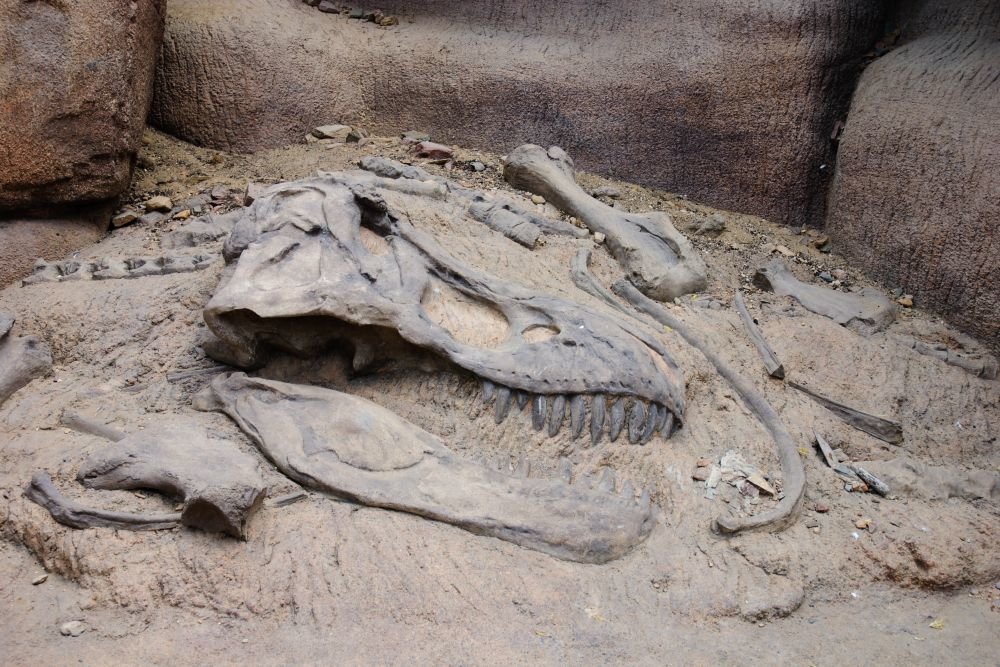Scientists from the University of Tsukuba (Japan) identified an unknown species of dinosaurs found earlier in Uzbekistan, which in their genus and size significantly exceeded the famous tironnasaurs.
This discovery was published in the journal of the Royal Society Open Science, and a brief report is available on the University website .
The fossilized remains of the "King of dinosaurs " were discovered in the lower Upper Cretaceous Bissekty Formation of the Kyzylkum Desert in Uzbekistan. Two separate analyses conducted by Japanese scientists helped to classify this finding. The found creature belongs to a group of ancient predators known in science - Carcharodontosaurs (Carcharodontosauria).

The authors named it Ulughbegsaurus uzbekistanensis in honor of Ulugbek, one of the most enlightened rulers of the Timurid Empire, a famous astronomer and mathematician of the XV century, and the second part - in honor of the name of the country where the unique fossil was discovered.
Scientists have found that an ancient predator roamed the Earth about 90 million years ago. The real "King of dinosaurs" was much larger than the famous tyrannosaurs and occupied the highest place in the food chain. The so-called super-predator dominated its ecosystem during the Cretaceous period, but later tyrannosaurs replaced it at the top of the food hierarchy.
Paleontologists have established Ulughbegsaurus uzbekistanensis had a mass of over 1,000 kg, and was approximately 7.5 to 8.0 meters in length, greater than the length of a full-grown African elephant.
Carcharodontosaurs, such as Ulughbegsaurus, disappeared from the ancient continent of Laurasia, which included Central Asia, at the very beginning of the Late Cretaceous period. According to one version of scientists, the disappearance could be associated with the evolutionary rise of tyrannosaurs, which gradually became the highest predators.










Working hours: 9:00 AM - 6:00 PM, Mon-Fri
For any questions
ПОЛЬЗОВАТЕЛЬСКОЕ СОГЛАШЕНИЕ
1. Определение
Настоящее Пользовательское соглашение (далее — Соглашение) является Публичной офертой в соответствии со статьёй 367 Гражданского кодекса Республики Узбекистан от 21.12.1995 (https://lex.uz/ru/docs/111181#162763) и регулирует порядок использования материалов и Сервисов сайта Государственного унитарного предприятия «Национальный PR-центр» (далее — Предприятие), размещённого на веб-сайте и поддоменах Национального Туристического Информационного Центра: https://uzbekistan.travel/ (далее — Сайт).
Посетитель и (или) Пользователь подтверждает, что ознакомлен, полностью и безоговорочно принимает все условия настоящего Соглашения и обязуется их соблюдать.
Использование Сайта Пользователем означает полное принятие данного Соглашения «как есть» в форме акцепта.
Соглашение вступает в силу с момента посещения любой страницы Сайта и (или) регистрации на Сайте и действует бессрочно во время пользования Сервисами Сайта.
Настоящее Соглашение обязательно для исполнения всеми Посетителями и Пользователями без каких-либо изъятий и дополнительных согласований.
Пользователь обязуется самостоятельно проверять актуальную редакцию Соглашения на Сайте перед использованием Сервисов.
2. Предмет Соглашения
Предметом настоящего Соглашения являются правила использования материалов Сайта и предоставление Посетителю и (или) Пользователю возможности использования Сервисов Сайта.
Предприятие является правообладателем исключительных прав на Сайт в целом и на его составные части, включая все виды контента: логотипы, товарные знаки, тексты, статьи, аннотации, иллюстрации, фотографии, графику, аудио- и видеофайлы, пользовательские интерфейсы, дизайн, структуру, программы, базы данных.
Я прочитал(а) и соглашаюсь с условиями использования сайта и политикой конфиденциальности.
